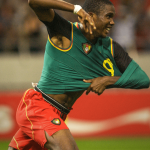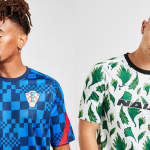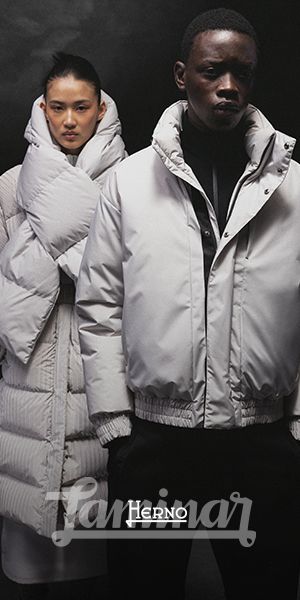
AFCON: Always a Party
Let us celebrate AFCON by recalling three shirts that defined its aesthetic
February 12th, 2024
The African Cup Of Nations (AFCON) has held a unique position in footballing consciousness since its inception in 1957. The tournament has displayed some of the greatest footballing talent the game has seen - one need not remind the reader of Roger Milla, George Weah, Samuel Eto’o, Yaya Toure, Abedi Pele, Didier Drogba, Mohammed Salah, Sadio Mane, Jay Jay Okocha (the list is endless, trust me). AFCON has also played host to some of the more bizarre incidents to happen on a football pitch exemplified perhaps most strongly when, during the a Tunisia vs Mali fixture in 2021, the referee, Janny Sikazwe, blew his whistle to end the game twice before 90 minutes had been played, once in the 85th minute and a further time in the 89th minute.
What I hope these brief opening two paragraphs demonstrate is, in its own way, AFCON happens to be one of the most entertaining footballing spectacles you can find, a collaboration of over one billion people speaking over fifty languages all aiming for the same, grailed, target: victory. Yet, arguably the stand-out aspect of AFCON is the high-level standard of kit design that has permeated the way in which the wider footballing world views them. The proud collection of nations that together make up Africa have, for all of their differences on and off the pitch, managed to encourage a limitless creative freedom which has aided in throwing off the shackles of dogmatic kit design. I have picked three that I think perfectly highlight this:
Cameroon 2002 - PUMA
Unique in design, adorned by greats such as the likes of Eric Djemba-Djemba, the Cameroonian sleeveless kit of 2002 remains a perfect encapsulation of all of the idiosyncrasies of AFCON and the forward-thinking nature of African kit design, instantly climbing into the pantheon of cult footballing items that remain evergreen in their eccentricity. Serena Williams liked the kit so much that, at the French Open in the same year, wore an outfit entirely inspired by the basketball-esque jersey of Cameroon.
This blending of sporting attire and the attention the shirt commanded, and continues to command, may not have ushered in an era of sleeveless footballing kits - perhaps for the best - yet the shirt highlighted one key element of AFCON, a willingness to dare to be different, which in turn encourages a coming together of a group of people(s). Football jerseys are totemic and, at their best and fully-functional, encourage proud national unity.
Nigeria 2018 - Nike
Even though Nigeria went down in defeat in the Final against Côte d'Ivoire, this AFCON showed how the Super Eagles are one of the most credible sides on the continent. And the kit designed by Nike for the 2018 World Cup is an important part of the national team's aesthetic and has helped restore the cultural relevance that Nigeria gained in the 1990s thanks to an absolute cult team.
Nominated for the Beazley Design Award, Nigeria’s 2018 kit, designed by Matthew Wolff and Nike, gripped not just the domestic Nigerian fanbase, but reinvigorated a global diaspora of Nigerians and inspired the world of kit design in the boldness of its patterning. The badge and feather patterning takes inspiration from Nigeria’s first World Cup (1994) squad whilst the remainder of the kit and the collection that followed paid homage to the modernity of Naija, and the youthful exuberance of success of Nigerians globally. From Lagos to London, the design of Nigerian jerseys has taken a prominent position in the current development of jersey esthetics, partly due to the great sales success.
Zaire 1974 - adidas
Zaire, the name of the Democratic Republic of the Congo from 1971 to 1997, highlights most strongly the point of this article. The Zaire adidas kit emblazoned with the “Leopards” written across the shirt and coupled with the iconography of a leopard and a football announced sub-saharan Africa onto the world stage in unforgettable style. Whilst the design of this kit may not be the most outlandish of African kits, the shirt was unquestionably proud, and that really is the key influencing factor that those styles have.
Zaire managed to combine a deep pride in its country with the courage of design, a welcome change from the Eurocentric nature of kit design before and after 1974. And again at this year's AFCON, it gave us a joyous cacophony of colour that flourishes with pride, tradition and optimism for the future. The way each African nation gathered around their national teams, with unique kits at the centre of their support, inspired and continues to inspire the world of football design globally. Each kit captured the essence of the competing nations, showcasing the best of Africa; these three kits are a drop in the ocean when it comes to telling the story of the passion for football on the continent but exemplify how a jersey can go beyond its simple use on the pitch.





























